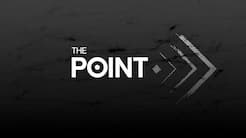This weekend there will be a summit in Redfern over formally recognising the frontier wars, the massacres of Indigenous people and the colonial violence that tainted Australia's settlement.
Currently recognition is unofficial, such as the procession behind those who have fought and served in Australia’s military marched in Canberra on Anzac Day in April 2015.
They held signs commemorating the massacres of Indigenous people in places such as Coniston in NT, and Myall Creek and Appin in NSW.
“A lot of non-Aboriginal people are unaware of what took place prior to Federation [in 1901],” says Aboriginal Tent Embassy elder Uncle Pat Lock.
“Even after Federation, there were still massacres.
The activists are also pushing for an official memorial to be set up on Anzac Parade, the famed road leading to the Australian War Memorial.

Source: State Library of New South Wales
How many were killed in frontier violence?
Historians have argued for years over how many First Nations peoples were killed in colonial violence.
Henry Reynolds estimated about 30,000 Indigenous people and approximately 5,000 settlers died in his book 2013 ‘Forgotten War’.
In 2014, two Queensland University researchers put the death toll at 60,000 Indigenous people in Queensland alone.
“If they call it a war, it’s a simple thing to accept it, it happened,” says Tent Embassy elder Pat Lock.
“Allow us to have a proper monument put up with a proper memorial.”
The National Capital Authority is charged with managing Anzac Parade and a number of other significant sites in Canberra.
End to the Frontier Wars march?
For several years, Indigenous and non-Indigenous protesters have marched at the rear of the official Anzac Day parade.
Last year’s Frontier Wars march was marred by an ugly scuffle between police and protesters.
A senior police officer drew out his taser and pointed it at an Aboriginal protester.
But Patrick Lock says they could respectfully march with the official Anzac Day parade.
“One of the main objectives is that instead of protesting on Anzac Day, we have a procession and a proper place in the march,” he told NITV News.
“If not, give us our own special day where we can honour these past warriors.”
The Australian War Memorial says its position has not changed since 2013, when its director Dr Brendan Nelson wrote that the war memorial wasn’t the “appropriate institution” to mark the Frontier Wars.
“The protracted conflict that occurred during the colonial dispossession of Indigenous Australians is a tragic fact of Australia’s history, even if some details remain disputed owing to the paucity and unreliability of the records,” Dr Nelson wrote.
“The story of Indigenous opposition to European settlement and expansion is one that should be told, but which cannot be told by the Memorial.”



